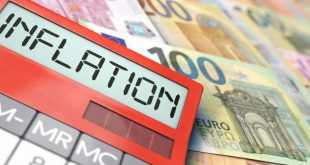The U.S. dollar gained ground on Thursday, recovering from recent lows as investors awaited key economic data releases that could provide insights into the Federal Reserve’s next moves. Meanwhile, the euro weakened due to signs of cooling inflation in Germany.
Dollar Recovers from Recent Lows
At 04:10 ET (09:10 GMT), the Dollar Index, which tracks the greenback against a basket of six major currencies, rose 0.2% to 101.182. This marks a rebound from a 13-month low of 100.51 earlier in the week. The dollar’s recovery was supported by its safe-haven appeal amid escalating trade tensions between China and the West and geopolitical concerns in the Middle East, Libya, and Ukraine.
Despite this recovery, the U.S. dollar remains under pressure due to the anticipated reduction in U.S. interest rates next month. The Federal Reserve is expected to reverse its aggressive rate hikes, which have bolstered the greenback over the past two years. The dollar has declined approximately 2.9% this month, on track for its steepest monthly drop in nine months.
Focus on Upcoming Economic Data
Traders are now focused on upcoming economic data, including weekly initial jobless claims and a revised reading on second-quarter GDP. The initial Q2 GDP reading showed resilience in the U.S. economy, raising hopes for a soft landing. However, recent data also points to a weakening labor market.
Additionally, the Personal Consumption Expenditures (PCE) price index, the Fed’s preferred inflation measure, is due on Friday. This data is likely to influence expectations regarding future interest rate cuts.
Euro Retreats on Cooling German Inflation
The euro weakened against the dollar, with EUR/USD trading 0.4% lower at 1.1079. Preliminary data from Germany’s states indicated a drop in national inflation for August, which weighed on the common currency. In North Rhine-Westphalia, Germany’s most populous state, inflation fell to 1.7% in August from 2.3% in July, with similar trends observed in other states.
Germany’s national inflation figures are expected later in the session, with eurozone-wide data due on Friday. Analysts expect eurozone inflation to decrease to 2.2% in August from 2.6% in July. The European Central Bank, which began cutting interest rates in June, may be prompted to implement further cuts if inflation continues to decline sharply.
GBP/USD Flat, Yen Steadies
The British pound traded flat at 1.3188 against the dollar, holding close to Tuesday’s peak of 1.3269, its highest level since March 2022.
In Asia, the yen steadied after a strong rally earlier in the week. USD/JPY rose 0.1% to 144.72. The yen has been buoyed by expectations that the Bank of Japan may raise interest rates further this year, following hawkish signals from BOJ officials. However, inflation data from Japan has not fully met the central bank’s expectations.
China’s Yuan Edges Higher Amid Trade Concerns
The Chinese yuan gained 0.3% against the dollar, with USD/CNY trading at 7.1060. The yuan was supported by stronger-than-expected midpoint fixes from the People’s Bank of China. However, sentiment towards China remains cautious due to fears of a trade war with the West, particularly after Canada joined the U.S. and the European Union in imposing steep import tariffs on China’s electric vehicle sector.
 Noor Trends News, Technical Analysis, Educational Tools and Recommendations
Noor Trends News, Technical Analysis, Educational Tools and Recommendations





